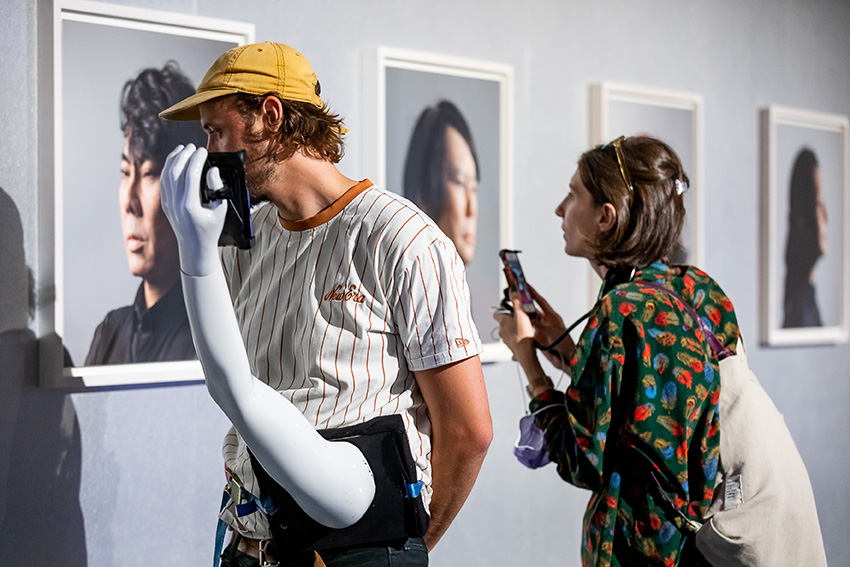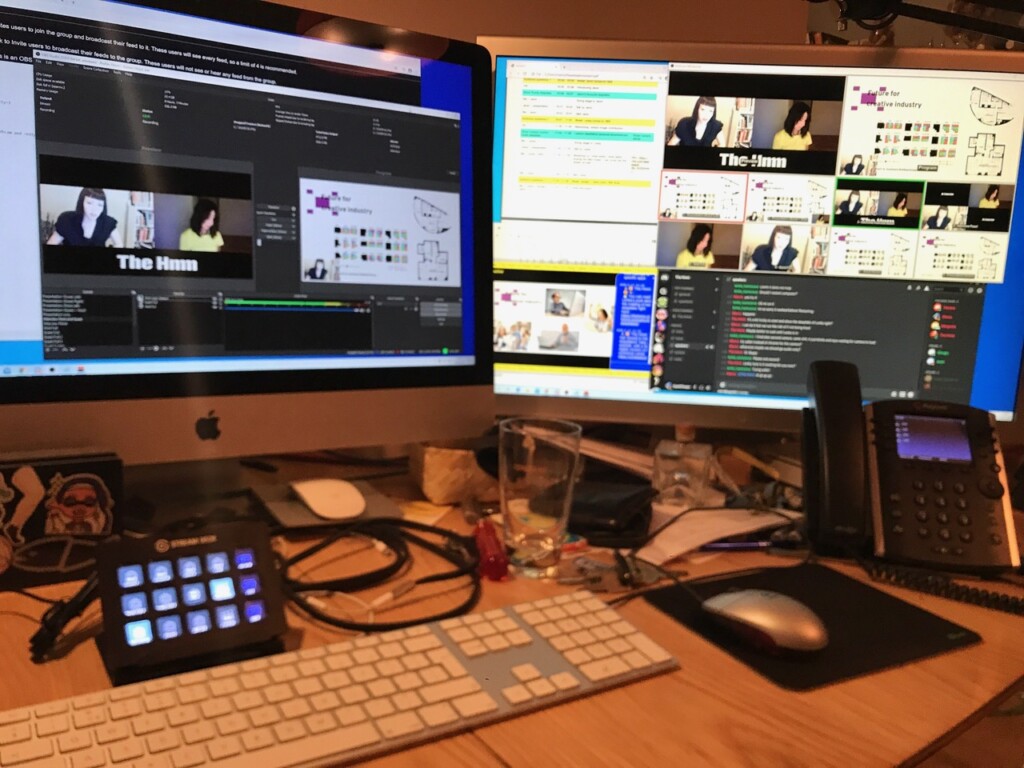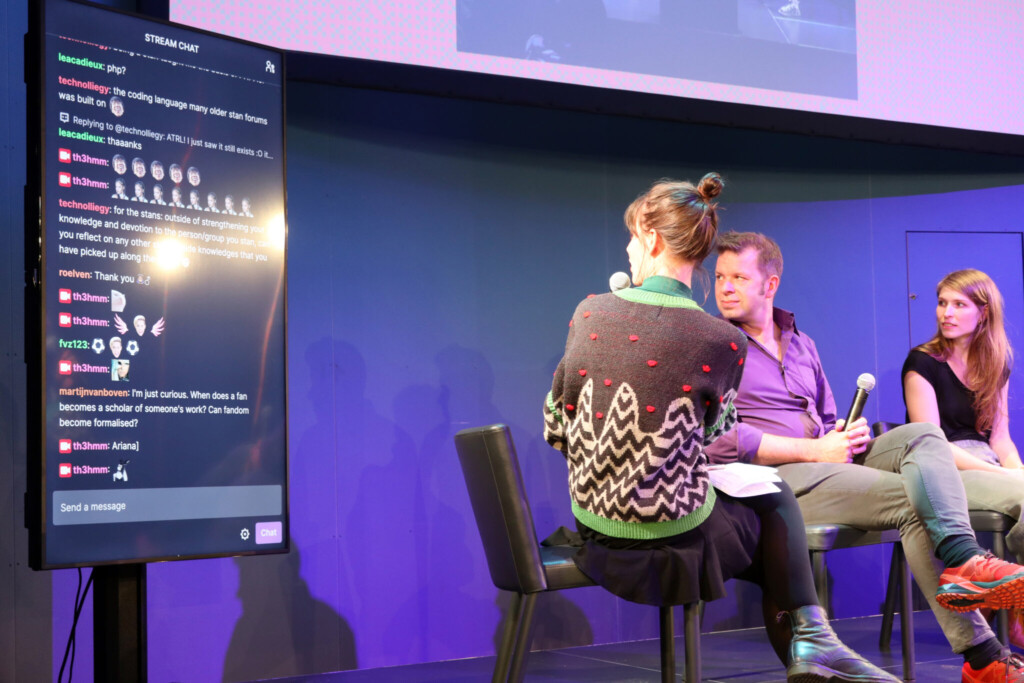MAIN TAKEAWAYS
- Some parts of an online experience add more value to the physical experience, not just vice versa.
- It is important to remember that while hybrid events might sometimes feel awkward, physical events can be just as awkward, so don’t let that deter you from hosting hybrid.
- The experience for a virtual visitor is not the same as a physical one, so make sure you keep them in mind when deciding on the proceedings of the event.
It was mid-September 2021 at the time we wrote this article. The coronavirus measures were loosening up, and cultural institutions could slowly open their physical doors to the public again. While the cultural sector was hit hard by the pandemic, the need for digitisation has also created new opportunities. With thousands of viewers for live-streamed theatre performances and museums that virtually open their doors to guide tours throughout the country, the cultural sector can no longer leave the internet unused. By offering physical and online programmes, you can reach more audiences and make your program more accessible.
However, such hybrid programming is a challenge. How do you address a physical and virtual audience at the same time? Should the physical and virtual experience be the same? How do you ensure a fruitful and meaningful exchange between both audiences? Sharing Hybrid are sessions that bring together several people working in the cultural sector in which we exchange knowledge and experience about online and hybrid events. In this second session we share our experiences with our first hybrid events.

It is valuable if the online experience is a unique experience
One hybrid experiment we discussed worked with a buddy system: every physical visitor guided a virtual visitor through an exhibition via their smartphone. For some virtual visitors, it was valuable that they saw the exhibition through the eyes of their physical buddy. Physical buddies even described their feelings about certain artworks or the atmosphere and smell of the space. In this way, virtual visitors saw the exhibition in a way they would never see it themselves – through the eyes and physical experience of another. Therefore, it was not a problem that virtual visitors didn’t see the artworks properly due to the poor audio and video quality of the smartphone.
Awkwardness isn’t necessarily a bad thing
Linking physical and virtual visitors directly, without them knowing each other, can be awkward. But this discomfort isn’t necessarily a bad thing. It can also be exciting to be paired up with someone you’ve never met. Moreover, it is good to realise that a physical event also has many awkward moments.
Mixing physical and virtual speakers works well and feels natural
For the experience of the physical audience, it doesn’t make a difference when there are both physical and virtual speakers speaking at an event. This is true even if there are more virtual than physical speakers. The variety in formats is good. It offers a lot of potential for cultural organisations. Programming international speakers creates a stronger programme, and inviting them to attend virtually is more sustainable.

A challenge: how do you make the experience for the physical and virtual visitor equal?
For a hybrid event, you should not just directly transmit the physical program to virtual visitors but also think about how virtual visitors can contribute. During this session we talked about the buddy system. In the buddy system, physical visitors were responsible for the virtual visitors’ experience, and virtual visitors were dependent on their physical buddies. It’s interesting to see how this exchange could have been more of a reciprocal collaboration. For example, during the guided tour of the exhibition, the artworks can be seen physically by the visitor. Hover, the description texts and background information can only be read online by their buddy.
Double check the tech in advance
When you’re organising an event where speakers and audience are present both physically and virtually, where they give a presentation with sound, and where they need to be able to talk to a moderator who is physically present, there are a lot of different audio outputs and inputs. It is good to check all of these in advance. But even if you do, things can go wrong, and they probably will so stay calm and be prepared to fill the silence (maybe with quiz questions) while the audio gets fixed.
Show virtual visitors where their perspective comes from
We tend to show only the content (the speakers, the exhibition, etc.) to virtual visitors, but for their orientation, it is also important to see the context: how is their perspective put into place? How is it filmed? For example, an exhibition space that worked with robot tour guides first showed virtual visitors the robot tour guide through a mirror before starting the tour.

How would an experimental approach work with a different target group?
We recgonise that the target audience with whom we do these experiments – even if they feel uncomfortable at times – is open to these kinds of interactions. It would be interesting to explore how a different, more corporate audience would respond to such live experiments. Based on the experiences of the group, it is more difficult to get them to go along with such experiments and get them out of their comfort zone. Although these experiments might be a big step for a wider audience, it is interesting to see how experiments in the cultural sector can expand beyond it.
Involve the physical space of virtual visitors at your event
Research shows that when people watch something on television, their home environment is essential. If we want exciting hybrid live events, it’s essential to involve the physical space of the virtual visitors. For example, you can instruct the audience to go for a walk during the break, grab a drink, or do something else physical. If you ask them to take a picture and share it afterwards, you can get a nice glimpse of the environments that everyone is looking from.
Chatting during presentations adds value
An advantage of online events is that visitors can chat about the topic being discussed, or exchange information during a lecture. During the event with the buddy system, the physical and virtual visitors were also chatting with each other during the presentations, and this was regarded as pleasant. Visitors talked together about what a speaker was saying, and sometimes questions rose from this conversation. Some visitors liked to discuss the question they wanted to ask with their buddy first.
* Featured image is a visualisation of ‘hybrid spaces’ by AI VQGAN+CLIP
* This article was originally published in The Hmm’s Hybrid Events dossier here: https://thehmm.nl/sharing-experiences-02/